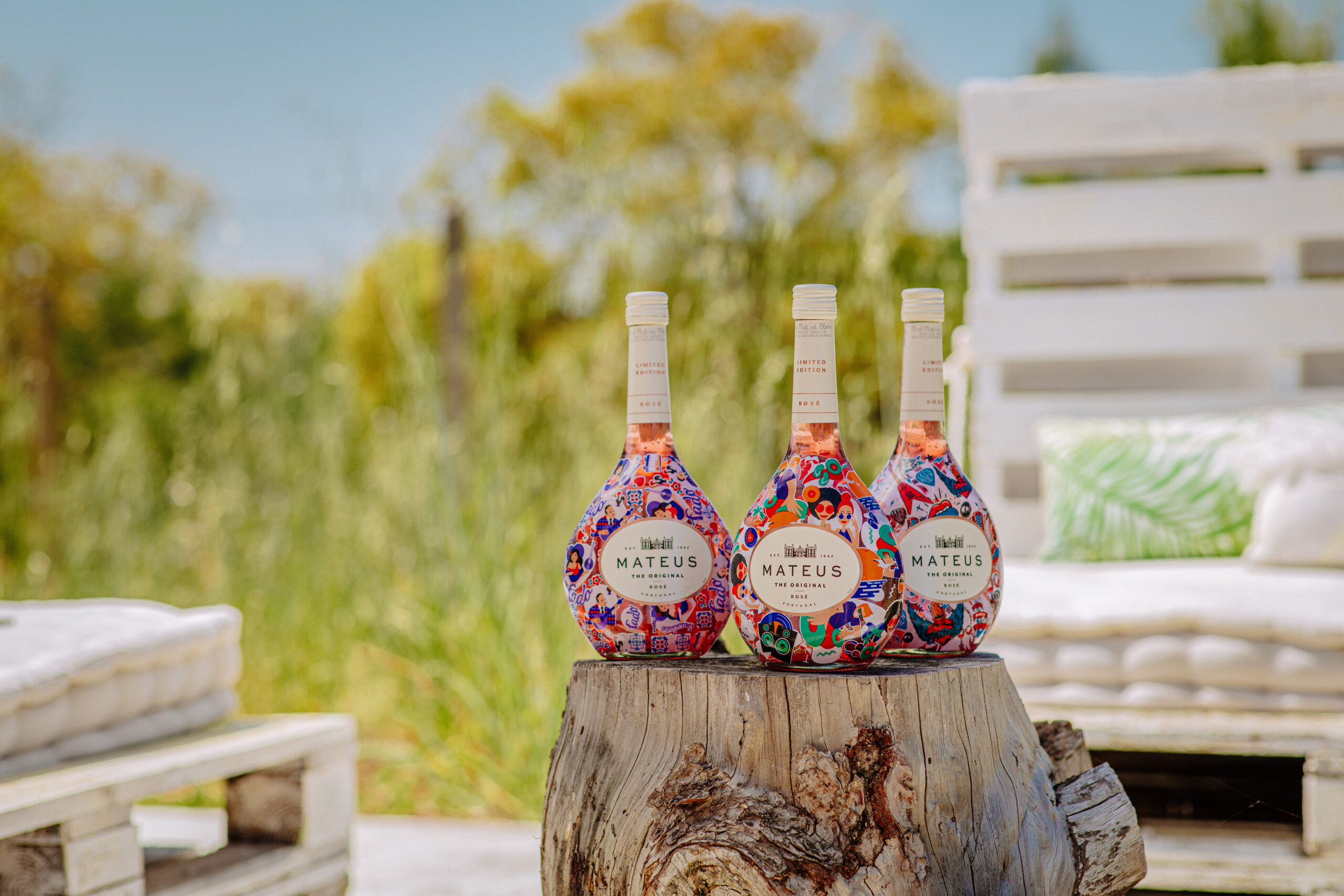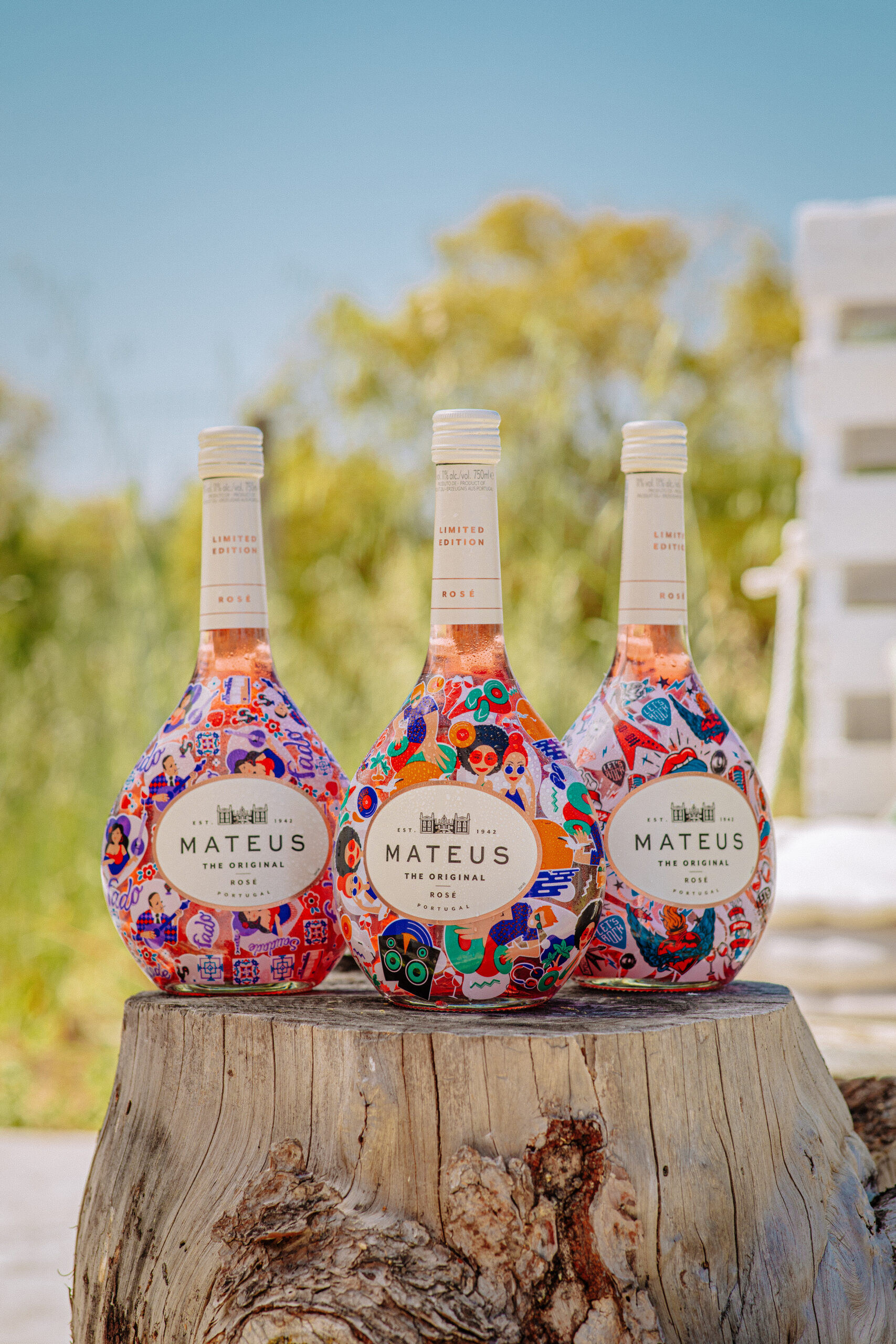Celebrating 80 Years of Portugal’s Mateus Original Rosé
Surfing the pink wine wave.

Jimi Hendrix was photographed drinking this wine—from the bottle. It also appears on the cover of Graham Nash’s 1973 album Wild Tales. Queen Elizabeth asked for it at the Savoy Hotel in London. Elton John identifies it in his 1973 song “Social Disease”: “I get juiced on Mateus and just hang loose.”
Mateus Rosé, the medium pink, lightly sparkling, off-dry, fruity, and oh-so-easy-drinking wine from Portugal, appealed not only to cultural and literal royalty, but also to millions of people around the world. It was the most-sold wine in the world in the 1970s, but it was no one-hit wonder: this year, Mateus celebrates its 80th anniversary, and it’s still going strong.
The Mateus brand was created in Portugal in 1942, and the wine entered world markets just after the end of the Second World War, when consumer spending began to rise. Sold first in Brazil, it was introduced to Europe and North America in the 1950s, and it was an immediate hit. By the 1970s, more than 40 million bottles of Mateus were produced each year, half of them sold in the United States. Current sales are about half that, but they are growing as Mateus benefits from the rising popularity of rosé wines worldwide.
When Mateus was first created, rosé wines had a tiny share of the wine market, and although they grew more popular over time, it is only in the last few years that they have come to rival white and red wines. Now, one in three bottles of wine sold in French supermarkets, the main sales channel for wine in France, is rosé. In the United States, rosé wine sales rose from about 2 million bottles in 2010 to nearly 30 million in 2020. For many years, then, Mateus was an outlier and had the cachet that goes with being obscure. But now it is surrounded by hundreds of competitors, and its success speaks to its appeal.


What is it about Mateus? It’s just a well-made wine. Its colour (always important in rosé wines, which many people buy by appearance) is medium pink with salmon notes. It lies in the middle of the rosé wine colour spectrum, which ranges from vibrant, electric pink to a hue so pale that you have to put it next to a glass of white wine to see that it’s pink. Mateus is off-dry, but the acidity is vibrant enough to mask almost all the sweetness and transform it into fruitiness. It has a little effervescence, reminiscent of the vinho verde wines made in the north of Portugal. And it’s perfect for sipping on its own or for drinking with food. Popular pairings include many South and Southeast Asian cuisines.
And of course, the distinctive bottle makes Mateus stand out on the shelf. It’s the shape of the water bottles carried by Portuguese soldiers in the First World War, and it has remained constant for 80 years. The colour of the glass has changed: formerly dark green, it is now clear, like most rosé wine bottles. And the label, once a drab depiction of Mateus Palace, is now modern and print driven.
To mark Mateus’s 80th anniversary, three limited-edition bottles have been produced, with labels that cover the bottle in a riot of colour. Each label celebrates music and dance to emphasize the joviality and conviviality of the sparkly, fruity wine: one label is named Rock, another is Fado (a Portuguese music style), and the third is Dance.
These labels also evoke the multicoloured wax that often covered Mateus bottles in the 1960s and 1970s. At the time, it was common for young people to use wine bottles as candleholders and let coloured candles drip wax down the bottles until it enveloped them completely. Mateus bottles were often favoured because of their unorthodox shape.
The anniversary and the limited-edition bottles might give Mateus a short-term boost in sales, but this is a wine that doesn’t appear to need marketing gimmickry—in the last few years, before the anniversary, more than 25 million bottles were produced annually. For eight decades, Mateus has flourished despite massive changes in the world of wine, and there’s no reason think it won’t be around for years to come.




